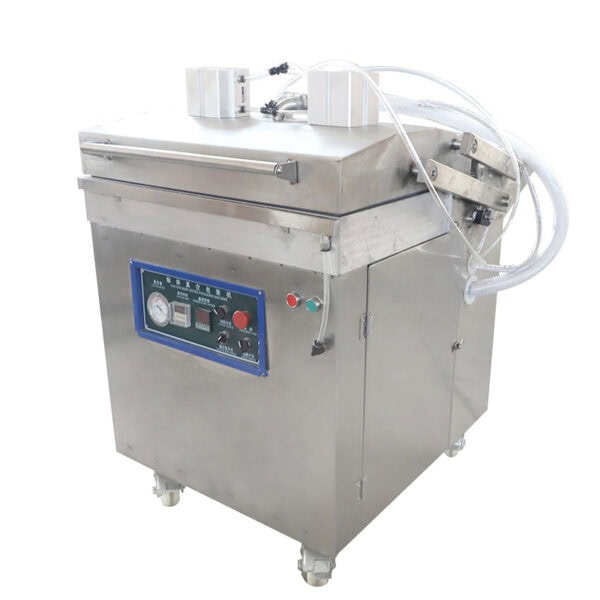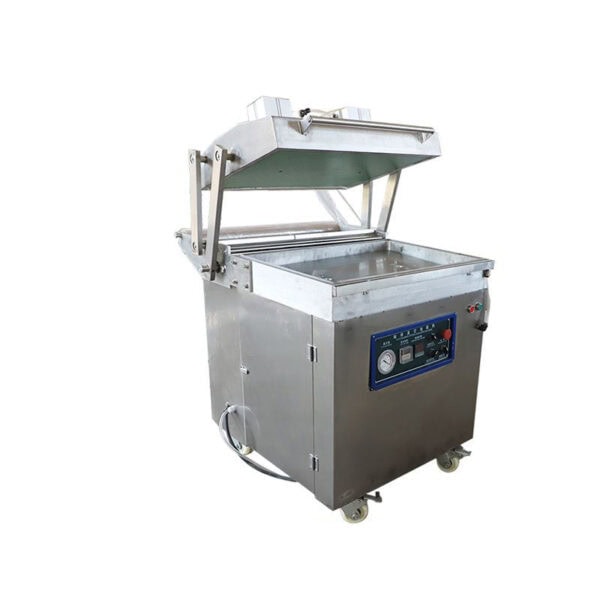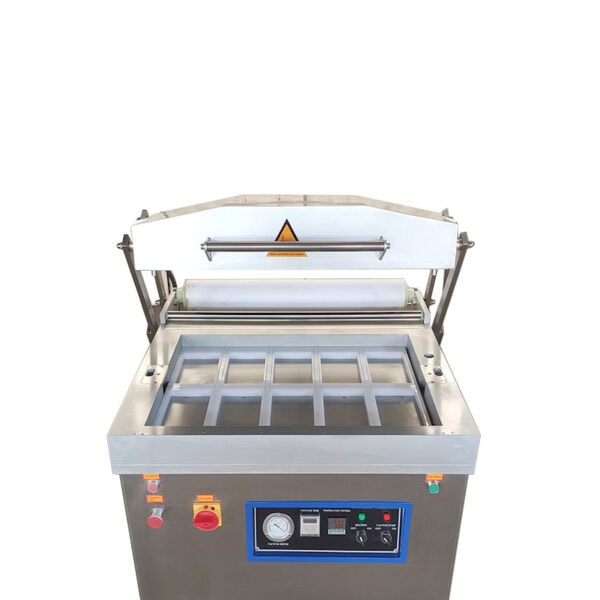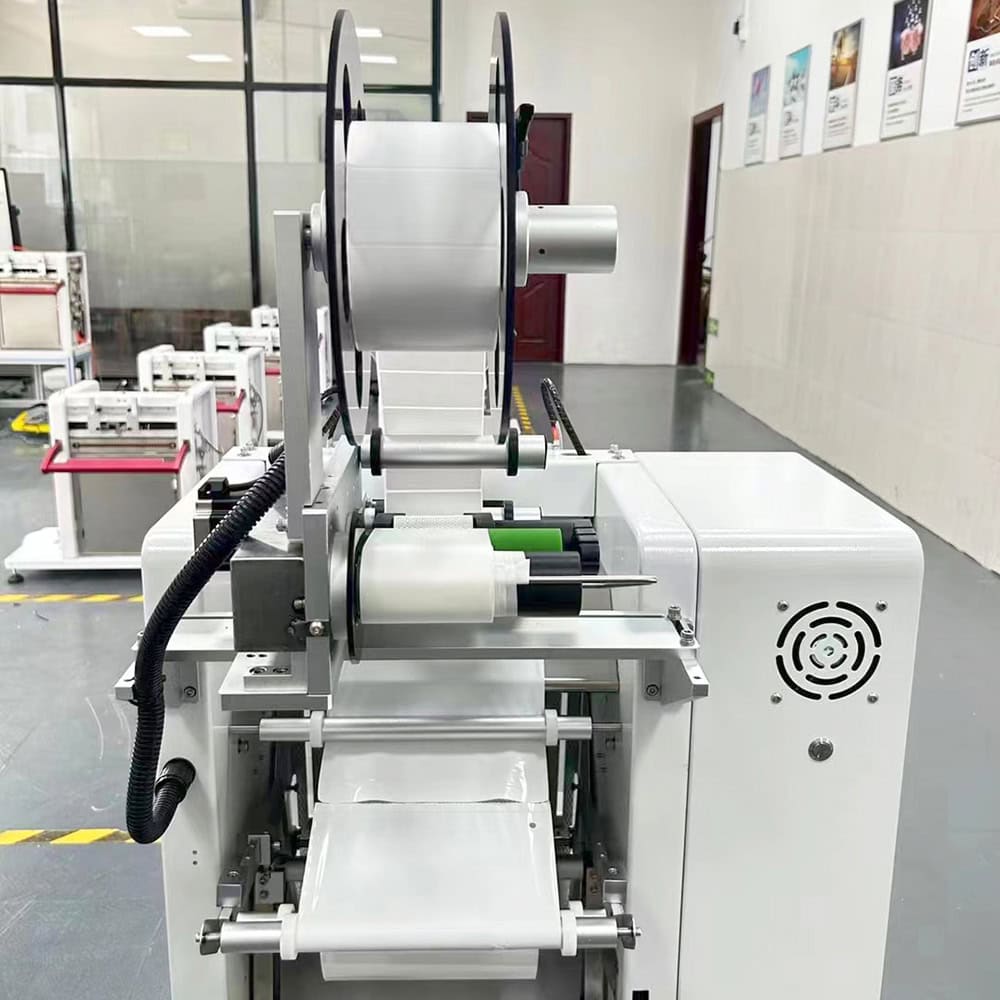Using a vacuum skin packaging machine can be challenging, leading to issues with packaging consistency and quality if not used correctly. For reliable and professional results, this guide simplifies the essential steps to properly operate your vacuum skin packaging machine.
To use a vacuum skin packaging machine, follow these steps: prepare and load the product, adjust vacuum settings, seal the product in place, and monitor for optimal sealing.
Let’s walk through each step for a seamless and effective vacuum packaging experience.

Understanding Vacuum Skin Packaging (VSP) Technology
Vacuum skin packaging (VSP) technology is designed to protect products by creating a tight, air-free seal around them, preserving freshness and enhancing their visual appeal. The VSP process removes nearly all air around the product and seals it tightly against the packaging material, which is commonly transparent, allowing a clear view of the product inside.
The benefits of VSP include longer shelf life, reduced freezer burn, and protection from contaminants. It’s a preferred method for packaging meat, seafood, cheeses, and delicate items that need a snug, protective barrier.
Preparing the Machine and Product
To start, ensure that the machine is correctly set up according to the manufacturer’s instructions. Power on the vacuum skin packaging machine, and adjust any necessary parameters based on your product and packaging requirements. Preparing the product is equally essential: place it on a compatible packaging tray, aligning it for optimal sealing. For irregularly shaped products, double-check positioning to prevent seal issues.

Loading Products on the Machine Platform
Place the prepared product onto the machine’s platform, taking care to position it centrally to ensure uniform vacuum application. Uneven loading can lead to improper sealing or compromised vacuum pressure. Avoid overlapping products or placing items too close together, as this can impact the quality and appearance of the final package.
Adjusting Vacuum and Sealing Settings
Each product type and packaging material may require different vacuum and sealing settings. Most machines will have controls for adjusting the vacuum intensity and seal duration. Select a vacuum level that sufficiently removes air without damaging the product. Adjust the seal temperature and time to create a firm seal without over-melting the film.
Experiment with different settings if you’re packaging a new type of item or working with a different packaging film.
Initiating the Vacuum Process
Once the machine is set up and the product is in place, you can start the vacuum process. Depending on the model, the machine will either have a single-start button or a more advanced touch-screen interface. Activate the vacuum cycle, allowing the machine to draw out air from the packaging chamber and compress the film against the product. The entire process should take only a few seconds to a minute.
Monitoring the Sealing Process
It’s crucial to monitor the sealing process for any issues, such as wrinkles, gaps, or insufficient sealing. Check the film as it molds around the product to ensure it is smooth and tight. If any inconsistencies are observed during this stage, you can stop the machine and make adjustments. Monitoring closely helps prevent packaging failures and ensures consistent quality.

Troubleshooting Common Issues
When using a vacuum skin packaging machine, you might encounter some common issues, such as incomplete sealing or wrinkles in the film. For example:
- Incomplete sealing: Check the seal temperature and time. Adjusting these can often solve the issue.
- Wrinkles in the film: Make sure the film is properly tensioned and that the product is centered on the tray. Wrinkles may also result from uneven vacuum pressure.
- Inconsistent vacuum levels: If the vacuum is not tight enough, inspect the machine’s vacuum pump and ensure it’s functioning correctly.
Cleaning and Maintenance of the Machine
Regular cleaning and maintenance are essential for the vacuum skin packaging machine’s longevity. Clean all components after each use, especially the seal bar and vacuum chamber, to prevent contamination and ensure that the machine is ready for the next operation. Regular maintenance also involves inspecting seals, vacuum pumps, and electronic parts, ensuring they are in good working order.
For companies with high packaging needs, such as those using a labeling machine, vacuum packaging machine, or other industrial packaging equipment, adhering to a maintenance schedule will support high output and reduce downtime.

Safety Precautions When Operating the Machine
Since vacuum skin packaging machines use high vacuum pressure and heat, safety measures are important. Always follow safety guidelines, including wearing protective gloves when handling hot areas of the machine, keeping hands clear of moving parts, and ensuring only trained personnel operate the machine. Additionally, always check for any loose components or compromised electrical connections before starting.
Selecting the Right Packaging Materials
Choosing the correct film and tray material is vital for achieving a durable, professional seal. Vacuum skin packaging often uses high-barrier films, which are specifically designed to withstand the vacuum process. Select films that match the requirements of your product’s shelf life, appearance, and handling needs.
For products needing extra protection, consider pairing the vacuum skin packaging machine with additional equipment like a shrink wrap machine or honeycomb paper making machine to add layers of defense against damage.
Advanced Tips for Optimal Packaging Results
For optimal results, adjust settings based on the type of product, its size, and its sensitivity to pressure. Conduct trial runs with new packaging materials and make note of the best settings for each type of product. For perishable items, consider using high-barrier films and slightly lower vacuum levels to avoid crushing delicate items.
Conclusion
Mastering the use of a vacuum skin packaging machine ensures consistent, high-quality results. By following these steps for setup, operation, and maintenance, you’ll achieve a reliable, professional seal with each package.









